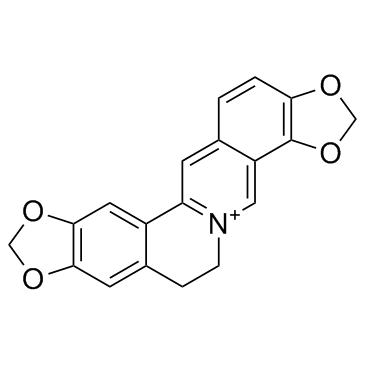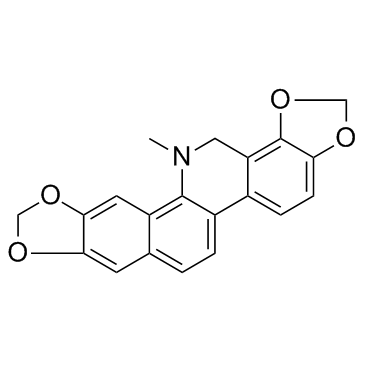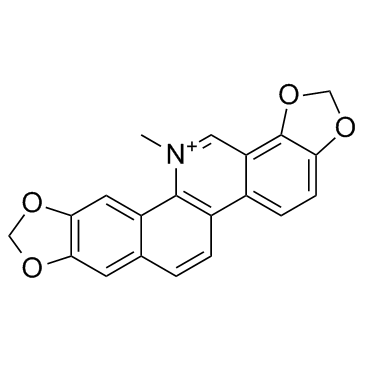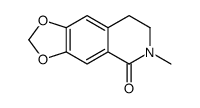130-86-9
| Name | protopine |
|---|---|
| Synonyms |
7-Methyl-6,8,9,16-tetrahydrobis[1,3]benzodioxolo[4,5-c:5',6'-g]azecin-15(7H)-one
Protopine 7-Methyl-6,8,9,16-tetrahydro[1,3]dioxolo[5,6]benzo[1,2-c][1,3]dioxolo[4,5]benzo[1,2-g]azecin-15(7H)-on Biflorine Protopin Bis[1,3]benzodioxolo[4,5-c:5',6'-g]azecin-15(7H)-one, 6,8,9,16-tetrahydro-7-methyl- EINECS 204-999-6 4,6,7,14-Tetrahydro-5-methyl-bis[1,3]benzodioxolo[4,5-c:5',6'-g]azecin-13(5H)-one BIFLORIN Hypercorine 4,6,7,14-Tetrahydro-5-Methyl Tangeratin Corydinine Corydalis C |
| Description | Protopine, an isoquinoline alkaloid contained in plants in northeast Asia.IC50 Value:Target:In vitro: Protopine was found to reduce nitric oxide (NO), cyclooxygenase-2 (COX-2), and prostaglandin E(2) (PGE(2)) production by LPS-stimulated Raw 264.7 cells, without a cytotoxic effect. Pre-treatment of Raw 264.7 cells with protopine reduced the production of pro-inflammatory cytokines [2]. Protopine is a novel microtubule stabilizer with anticancer activity in HRPC cells through apoptotic pathway by modulating Cdk1 activity and Bcl-2 family of proteins [3]. In HepG2 cells, protopine significantly increased CYP1A1 mRNA levels after 24h exposure at concentrations from 25 and 10 μM. Protopine also dose-dependently increased CYP1A1 and CYP1A2 mRNA levels in human hepatocytes [4].In vivo: Assays were performed on MDA-MB-231 human breast cancer cells, and the result showed that protopine exhibited anti-adhesive and anti-invasion effects in MDA-MB-231 cells; after treatment with protopine for 90 min, the expression of EGFR, ICAM-1, αv-integrin, β1-integrin and β5-integrin were remarkably reduced [1]. |
|---|---|
| Related Catalog | |
| References |
| Density | 1.3±0.1 g/cm3 |
|---|---|
| Boiling Point | 547.5±49.0 °C at 760 mmHg |
| Melting Point | 211ºC |
| Molecular Formula | C20H19NO5 |
| Molecular Weight | 353.369 |
| Flash Point | 284.9±29.8 °C |
| Exact Mass | 353.126312 |
| PSA | 57.23000 |
| LogP | 3.76 |
| Vapour Pressure | 0.0±1.5 mmHg at 25°C |
| Index of Refraction | 1.613 |
| Storage condition | Refrigerator |
CHEMICAL IDENTIFICATION
HEALTH HAZARD DATAACUTE TOXICITY DATA
|
| Symbol |

GHS06 |
|---|---|
| Signal Word | Danger |
| Hazard Statements | H301 |
| Precautionary Statements | P301 + P310 + P330 |
| Safety Phrases | 24/25 |
| RIDADR | UN 1544 |
| RTECS | VS2800000 |
| Packaging Group | III |
| Hazard Class | 6.1(b) |
| Precursor 4 | |
|---|---|
| DownStream 5 | |


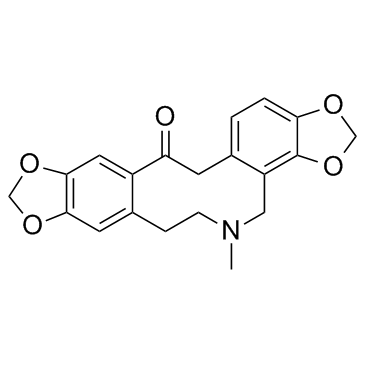

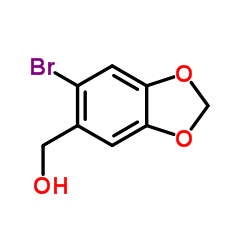
![5-BROMO-6-(CHLOROMETHYL)BENZO[D][1,3]DIOXOLE structure](https://image.chemsrc.com/caspic/226/64603-67-4.png)

